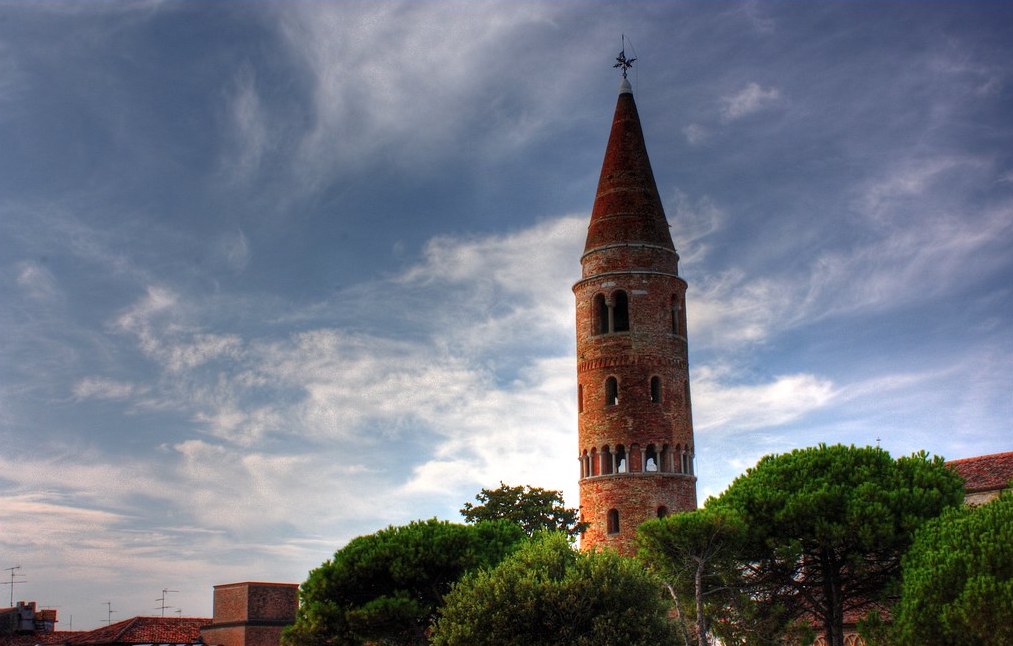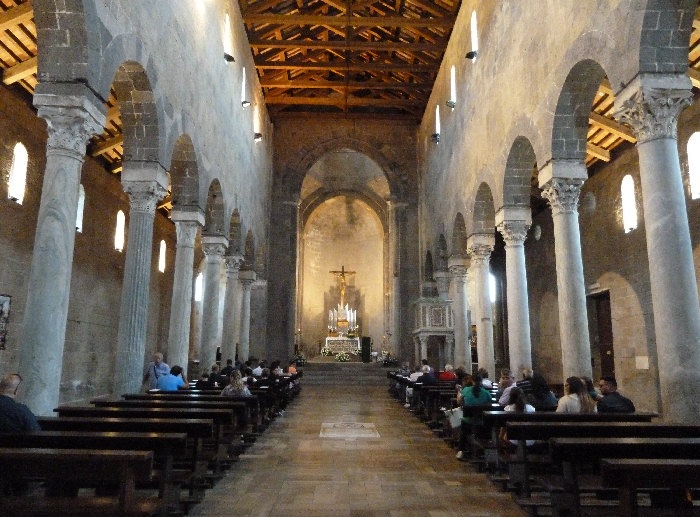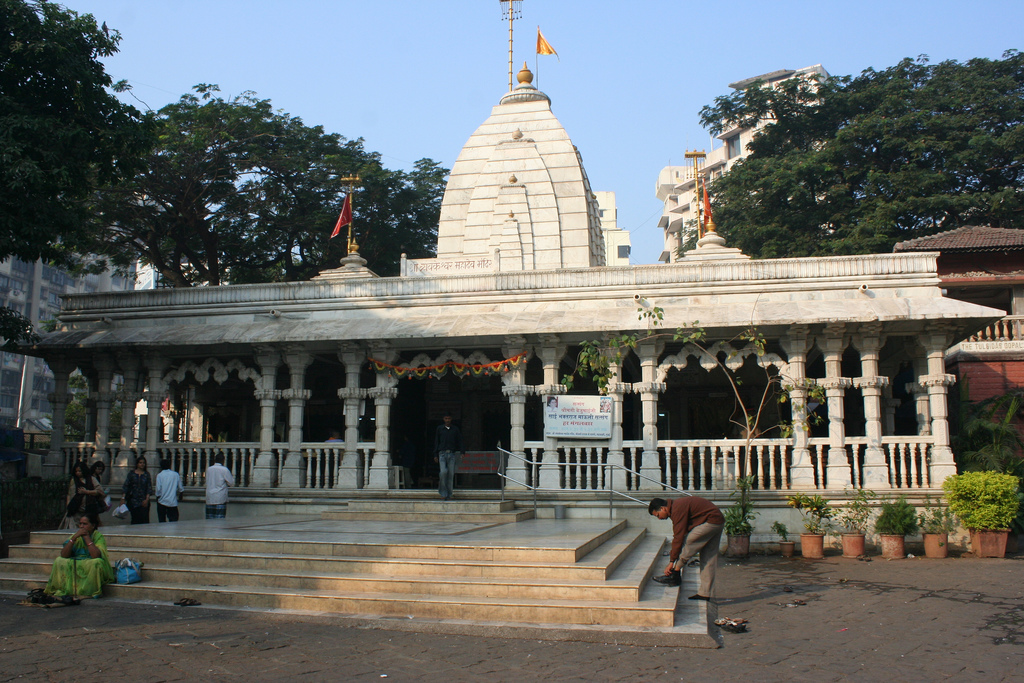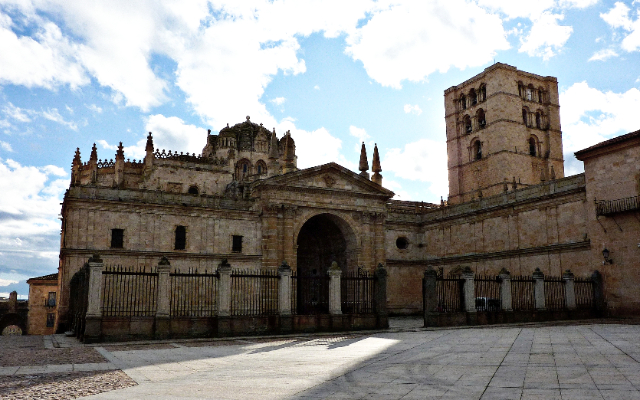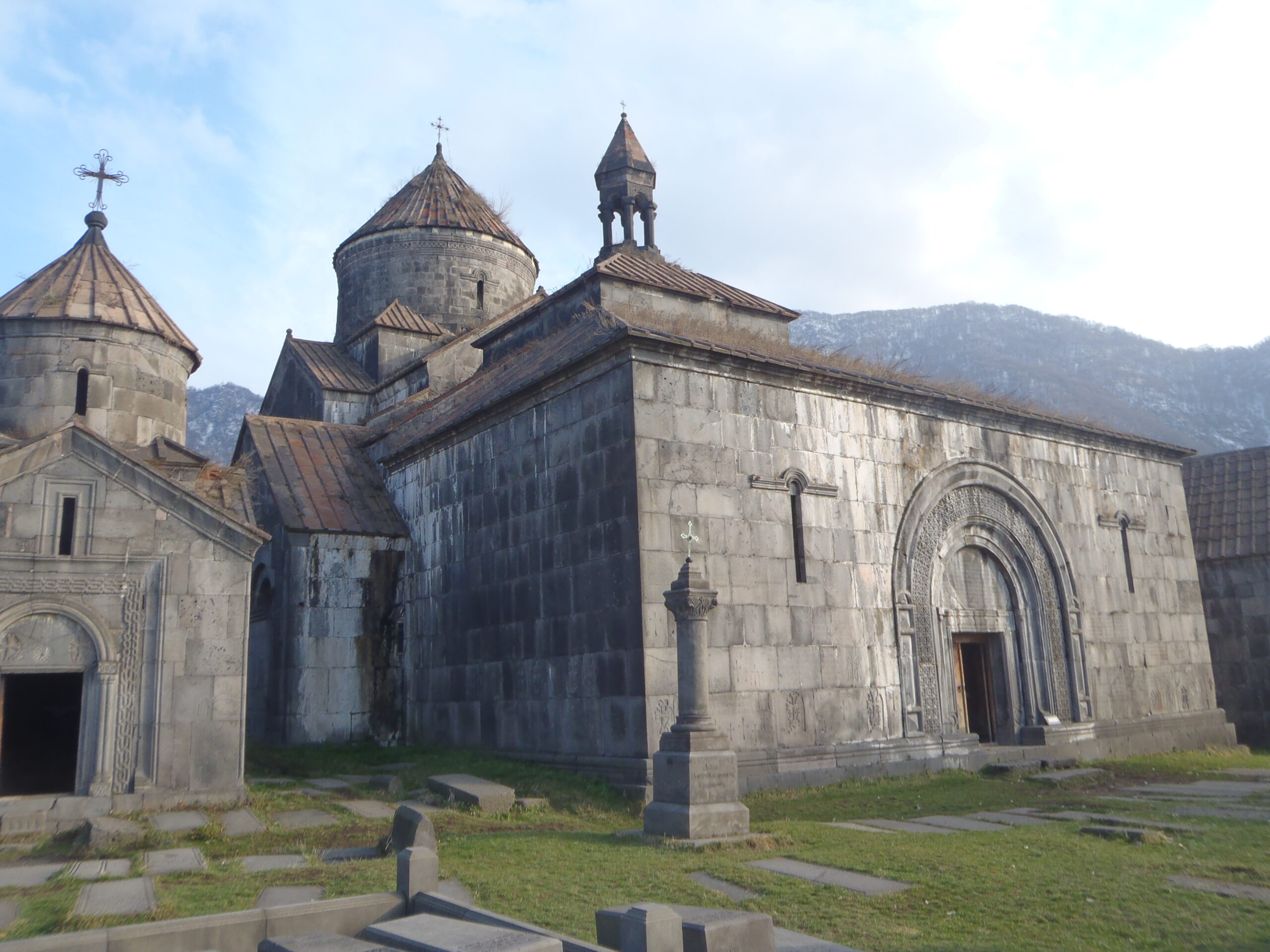The Caorle Cathedral Bell Tower is certainly one of the symbols, if not the symbol par excellence, of the maritime town; for centuries, in fact, its cylindrical structure has dominated the historic center and the surrounding countryside. The construction of the bell tower as it can be admired today dates back to the 11th century; however, it is certain of a pre-existing structure, dating back to at least the 9th century, both because of the presence of a complex of sacred buildings that predates the present cathedral (and over the ruins of which the present building was built) and because of the presence of a band of Istria stone bricks, which makes the base of the tower different from the rest of the structure and certainly later to it. It is believed that the belfry may have been built over the ruins of a lighthouse or watchtower of the ancient town of Caprul: the position with respect to the sea makes, in fact, plausible the construction of a lookout tower that could allow to see in advance possible invaders such as pirates or foreign populations; other historians have assumed that it was one of the towers reinforcing the town walls.
Until World War I, the bell tower of the cathedral had four bronze bells, which provided "satis boni concertus et armoniae." They were rung by means of ropes that, from the belfry located on the top floor, reached the bottom of the structure. The bells, as well as those of the bell tower of the Sanctuary of Our Lady of the Angel, were removed by the Austrians to build weapons in 1917.
The Caorle Cathedral Bell Tower is 44 meters high and is internally divided into eight floors, separated by concrete floors supported by beams that reinforce the structure, with the exception of the second floor, which has a wooden floor slab. With works carried out in 2011, the bell tower was equipped with spiral staircases connecting the attics from the first to the sixth floor; the staircase leading from the ground floor to the second floor is wooden, while the staircase leading from the sixth floor to the seventh floor, i.e., the belfry, is still rung and impassable to the public. In the attics one can still see the holes through which the ropes passed that allowed the bells to be rung by hand, which were removed after the electrification system was implemented.
So that the entire weight of the structure does not bear on the small columns that adorn the belfry mullioned windows and loggia, they are contained within an arch, which discharges the weight outside; the only columns that really bear weight are those of the belfry loggia mullioned windows, where the weight to be borne is, at that point, only that of the spire.
